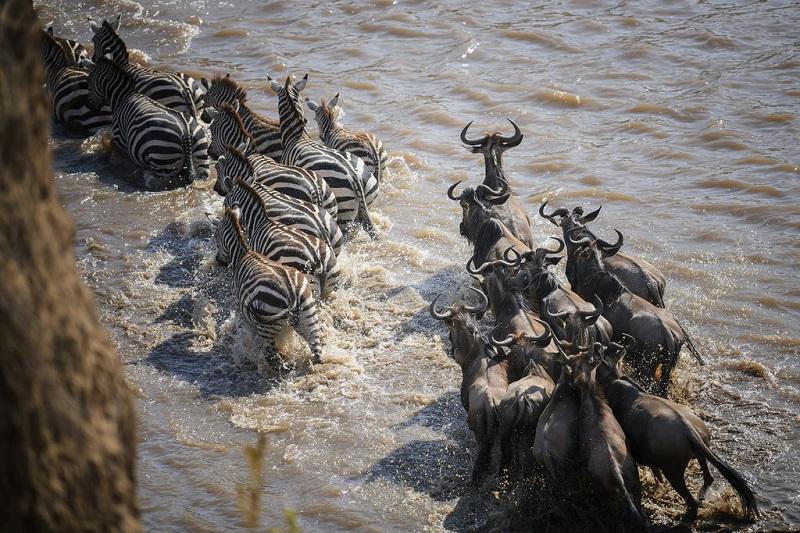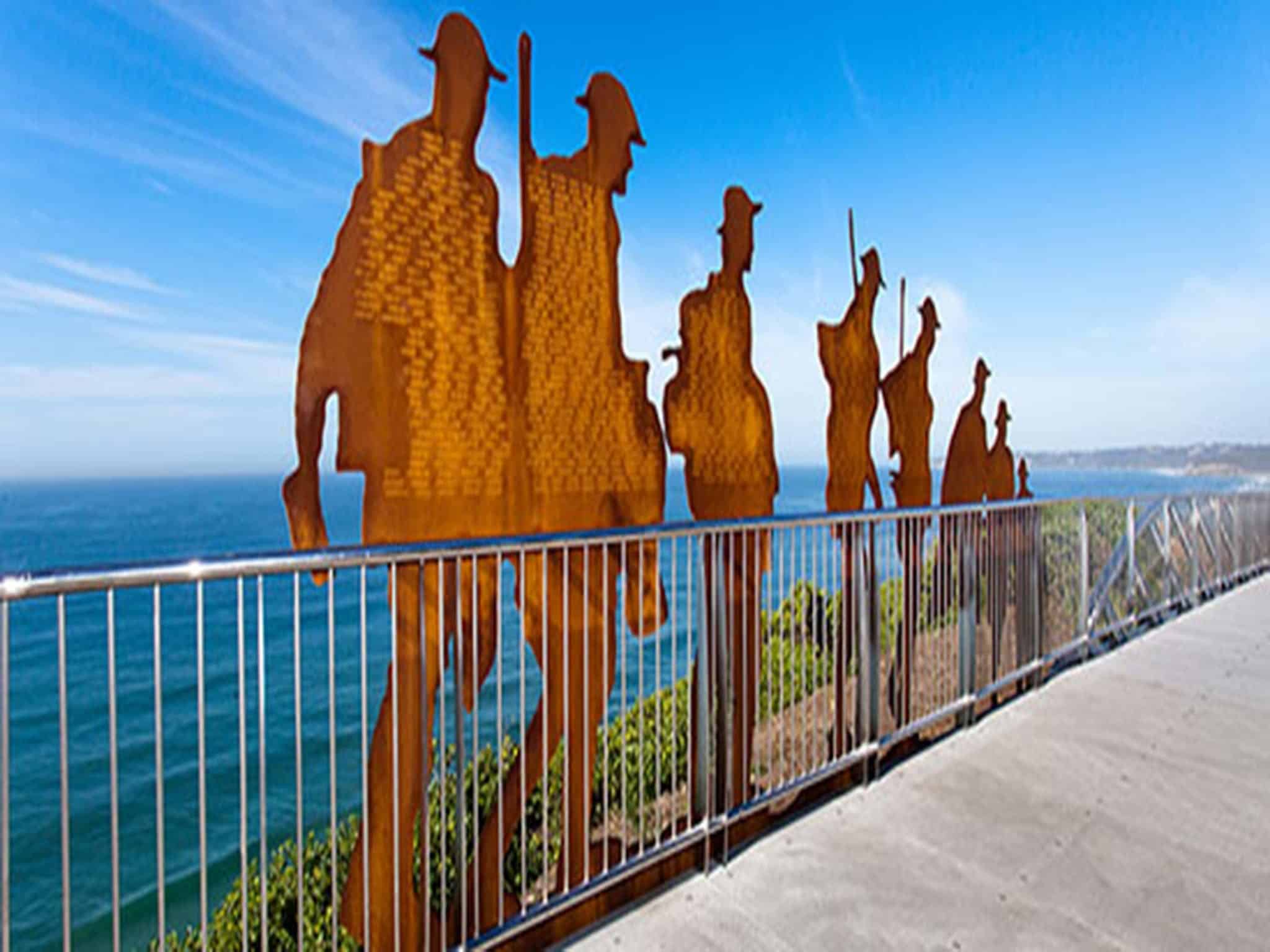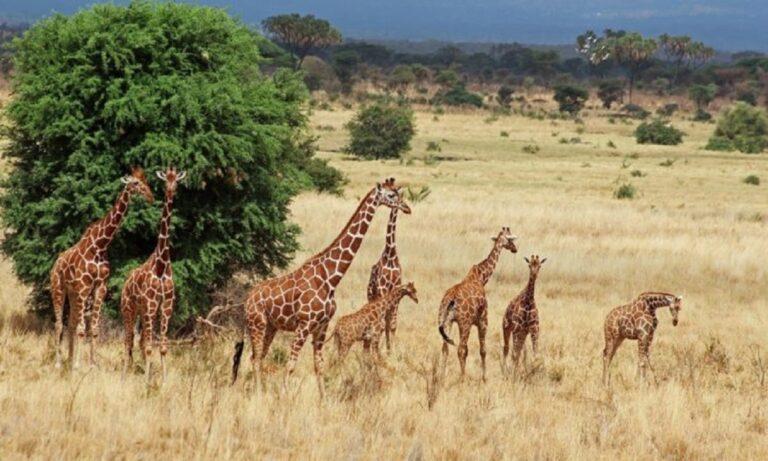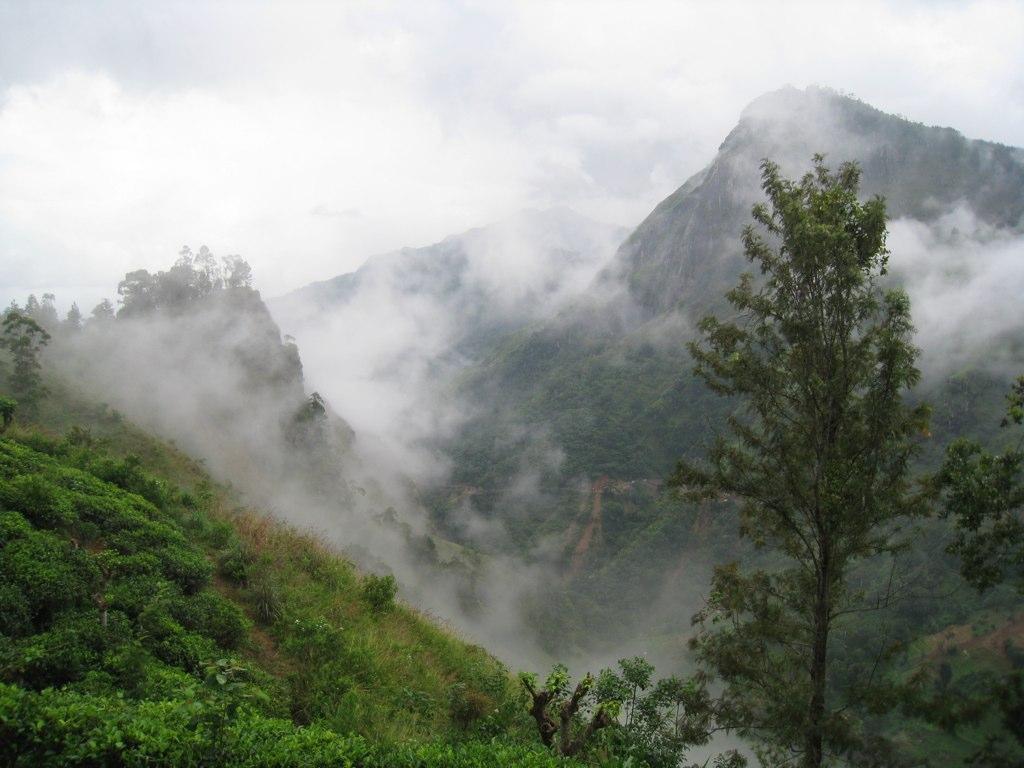Guide to Masai Mara: Your Ultimate Safari
The Masai Mara, often simply referred to as the Mara, is a stunning wilderness located in southwestern Kenya. The name ‘Mara’ means ‘spotted’ in the Maa language of the Maasai people, the area’s ancestral residents. This name aptly describes the landscape, which from a distance appears dotted with acacia trees, indentations, and craters.
The Mara’s vast open plains provide a sanctuary for an incredible variety of wildlife. These include elephants, buffalo, zebras, giraffes, hyenas, and the Mara’s renowned big cats: lions, leopards, and cheetahs. From July to November each year, the savannah becomes a vital feeding ground for immense herds of wildebeest during their legendary migration.
Attracting thousands of visitors annually, the Masai Mara offers some of the most authentic and breathtaking safari experiences in Africa. This guide will take you through everything you need to know to make the most of your journey to this iconic safari destination.
Overview
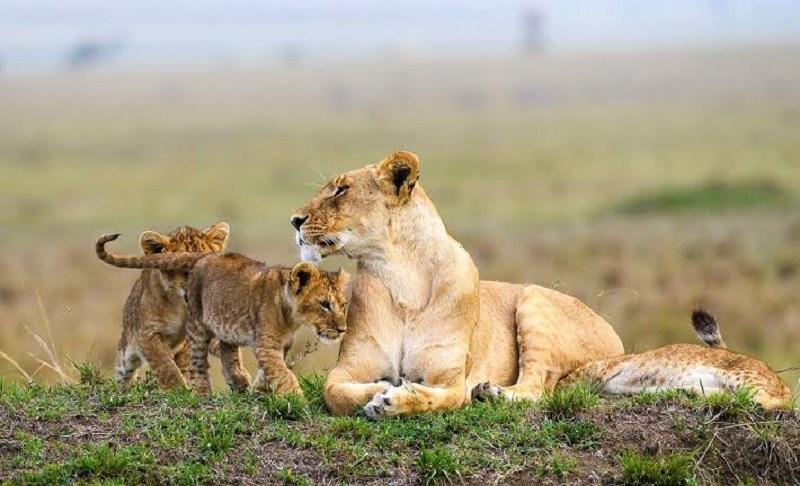
The Masai Mara National Reserve is one of Africa’s most celebrated wildlife conservation areas, renowned for its extraordinary biodiversity and stunning landscapes. The reserve spans approximately 1,510 square kilometers (583 square miles) and forms part of the larger Serengeti ecosystem, which extends into Tanzania. The Mara is named after the Maasai people, the indigenous inhabitants of the area, and the word ‘Mara,’ meaning ‘spotted’ in the Maa language.
This reflects the appearance of the landscape, marked with acacia trees, bushes, and the shadows of clouds. The reserve’s ecosystem supports an incredible array of wildlife, making it a top destination for safari enthusiasts. The Masai Mara is home to the famous “Big Five” – lions, leopards, elephants, buffalo, and rhinoceros – as well as cheetahs, giraffes, zebras, hyenas, and countless species of birds.
One of the most spectacular events in the reserve is the Great Migration, which occurs annually from July to November. During this period, over 1.5 million wildebeest, accompanied by hundreds of thousands of zebras and gazelles, traverse the Mara in search of fresh grazing, facing dramatic river crossings and predator encounters along the way.
Wildlife

The Masai Mara is home to the iconic “Big Five” – lions, leopards, elephants, buffalo, and rhinoceros. Lions are particularly abundant in the Mara and are one of the highest densities of these majestic predators in the world. Visitors can often spot prides lounging in the grasslands or stalking their prey, especially during the Great Migration when food is plentiful.
One of the most spectacular wildlife events in the Masai Mara is the Great Migration, which occurs annually from July to November. During this period, over 1.5 million wildebeest, accompanied by hundreds of thousands of zebras and gazelles, journey across the Serengeti and into the Mara in search of fresh grazing. This epic migration involves dramatic river crossings, particularly at the Mara River, where the animals must navigate strong currents and evade waiting crocodiles.
In addition to the Big Five, the Masai Mara is famous for its abundance of predators. Cheetahs are frequently seen in the reserve, utilizing the open plains to sprint after their prey. Hyenas, both spotted and striped, are also common, often seen scavenging or hunting in packs.
The reserve is home to numerous other mammals, including giraffes, zebras, hippopotamuses, and a variety of antelope species such as impalas, topis, elands, and Thomson’s gazelles. The reserve boasts over 450 species of birds, including raptors, waterfowl, and savannah specialists. Notable species include the African fish eagle, martial eagle, secretary bird, and the vibrantly colored lilac-breasted roller.
Getting to Masai Mara from Nairobi
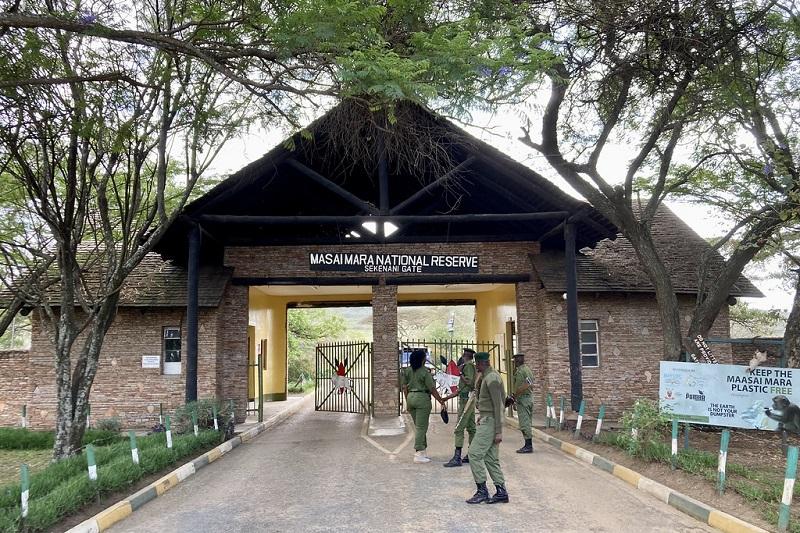
Traveling from Nairobi to the Masai Mara National Reserve is an adventure in itself. The journey covers a distance of approximately 270 kilometers (168 miles) and can be undertaken by road or air.
By Road
Traveling by road from Nairobi to the Masai Mara is a popular choice for many visitors, offering the chance to see the Kenyan countryside up close. The drive typically takes about 5 to 6 hours, depending on traffic and road conditions. Here’s a breakdown of the road journey:
- Nairobi to Narok: The first leg of the journey is from Nairobi to Narok, a major town located about 140 kilometers (87 miles) away. This stretch is mostly on a well-maintained tarmac road, taking around 2.5 to 3 hours. The route passes through scenic landscapes, including the Great Rift Valley escarpment, which offers stunning views and several lookout points perfect for a quick stop and photo opportunities.
- Narok to Masai Mara: From Narok, the road conditions change significantly. The remaining 130 kilometers (81 miles) to the Masai Mara are on rougher, sometimes unpaved roads, taking an additional 2.5 to 3 hours. This part of the journey is often bumpy, but it’s a great way to get a sense of the remote, rural areas of Kenya. Along the way, you might spot local wildlife and traditional Maasai villages.
By Air
For travelers seeking a quicker and more comfortable option, flying from Nairobi to the Masai Mara is an excellent choice. Several airlines operate daily flights from Wilson Airport in Nairobi to various airstrips in the Masai Mara, such as Keekorok, Ol Kiombo, and Musiara. The flight takes approximately 45 minutes to 1 hour, offering stunning aerial views of the Kenyan landscape like the Great Rift Valley.
Best time to Visit Masai Mara National Reserve
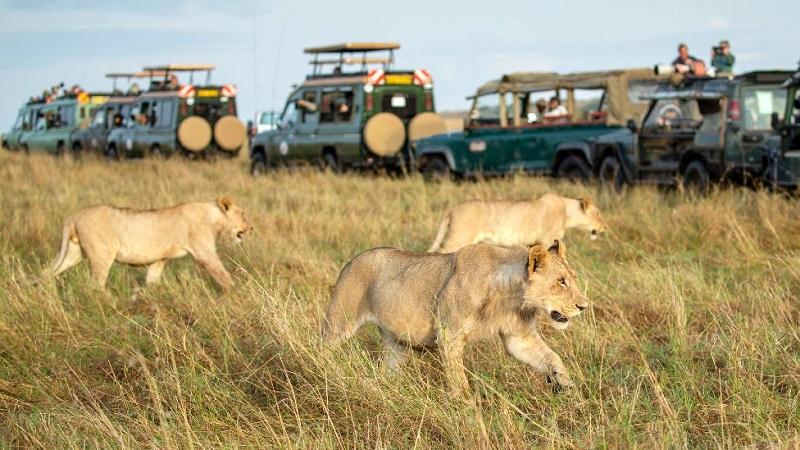
The Masai Mara National Reserve is a premier safari destination renowned for its abundant wildlife and stunning landscapes. Thanks to its mild climate and rich biodiversity, there is no definitive “best time” to visit for general game viewing. The reserve offers exceptional wildlife encounters year-round, ensuring that visitors can always enjoy the wonders of the Mara’s wide and open plains.
One of the Masai Mara’s greatest strengths is its status as a year-round safari destination. Regardless of when you visit, the reserve teems with wildlife, including the iconic “Big Five” – lions, leopards, elephants, buffalo, and rhinoceros. This consistent presence of wildlife means that visitors can always anticipate thrilling game drives and unforgettable encounters.
The dry season, which spans from June to October, is generally considered the best time for game viewing in the Masai Mara. During these months, the weather is cooler, and water sources become scarcer, drawing animals to the remaining rivers and waterholes. This concentration of wildlife makes it easier to spot various species, including predators and their prey.
Other things to do in Masai Mara
Beyond the thrilling game drives and wildlife viewing, the Masai Mara offers a variety of other activities to enhance your safari experience.
Hot Air Balloon Safaris
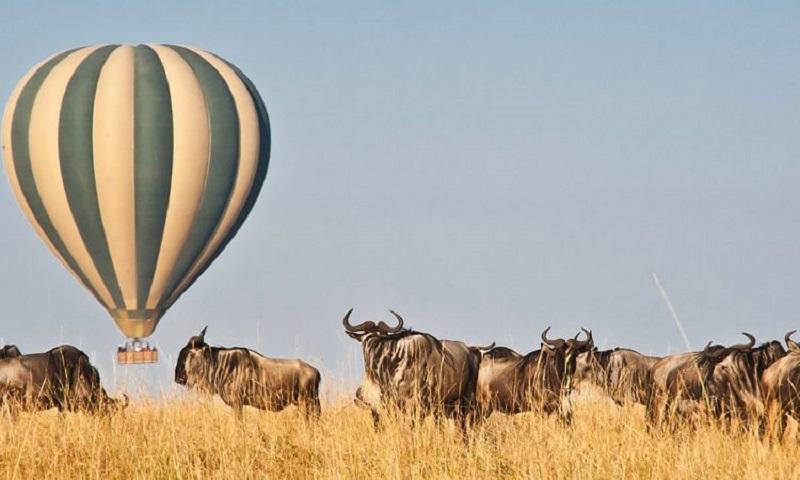
Experience the Mara from a bird’s-eye view with a hot air balloon safari. These early morning flights provide breathtaking panoramic views of the savannah, offering a unique perspective on the landscape and its wildlife. The journey typically concludes with a champagne breakfast in the bush, making for a memorable adventure.
Bird Watching
With over 450 species of birds, the Masai Mara is a paradise for birdwatchers. From the impressive martial eagle to the colorful lilac-breasted roller, the diverse avian life offers endless opportunities for bird enthusiasts to spot and photograph these feathered wonders.
Night Game Drives
For a different perspective on the Mara’s wildlife, embark on a night game drive. These excursions provide the chance to see nocturnal animals like leopards, hyenas, and bush babies, and to witness the Mara’s nighttime ecosystem come alive under the stars.
These activities, alongside the reserve’s renowned game drives, ensure that your visit to the Masai Mara is not only about seeing wildlife but also about experiencing the rich cultural and natural heritage of this extraordinary region.
Surrounding local communities
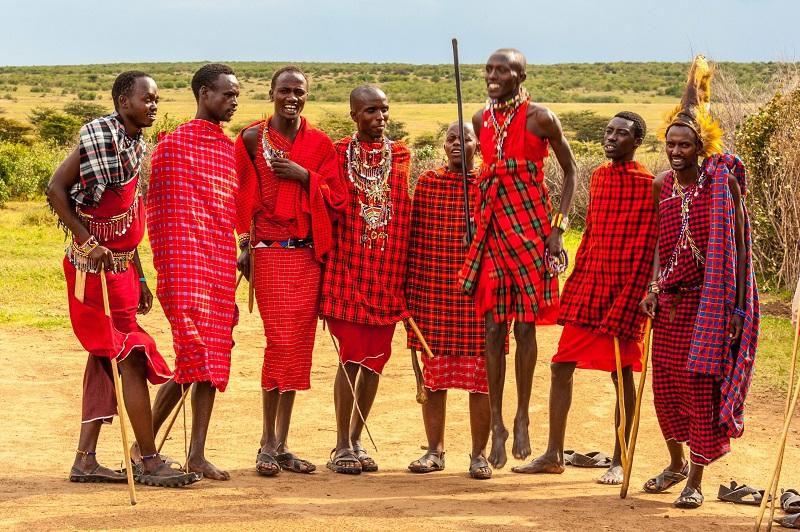
The Masai Mara is surrounded by local communities, primarily the Maasai people, who have lived in harmony with the land and its wildlife for centuries. The Maasai are semi-nomadic pastoralists, known for their distinctive red clothing, intricate beadwork, and cultural traditions. Their deep connection to the land is evident in their sustainable practices and reverence for the natural world.
Visitors to the Masai Mara have the opportunity to engage with these communities through cultural visits, where they can learn about Maasai customs, traditional dances, and daily life. The Maasai also play a crucial role in conservation efforts, partnering with various organizations to protect wildlife and maintain the ecosystem. By supporting local tourism initiatives, visitors contribute to the well-being of these communities and the preservation of their unique way of life.
Park Fees
Visiting the Masai Mara National Reserve requires payment of park fees, which contribute to conservation efforts and park maintenance. As of 2024, the fees are as follows:
- Non-Residents: USD 80 per adult per day and USD 45 per child per day.
- Residents: USD 20 per adult per day and USD 10 per child per day.
- Kenyan Citizens: KES 1,200 per adult per day and KES 400 per child per day.
These fees are subject to change, so it’s advisable to check with the Kenya Wildlife Service or your tour operator for the most current rates before your visit. The fees are collected at park entry points and can typically be paid in cash or via card, depending on the location.
FAQs on Masai Mara Reservation
Do I Need a Car to Tour the Reservation?
Yes, a car is essential to tour the Masai Mara National Reserve due to its vast size and the need to cover large distances to view wildlife. Most visitors either rent a 4×4 vehicle or book a guided safari with a tour operator. Guided safaris typically provide vehicles specifically designed for game viewing, equipped with open roofs for better visibility and photography opportunities.
Are Unguided Walks Allowed in the Reservation?
No, unguided walks are not allowed in the Masai Mara National Reserve for safety reasons. The reserve is home to many dangerous wildlife species, including predators like lions and leopards. Walking safaris, when available, are always conducted by experienced guides who are knowledgeable about the area and trained in ensuring visitor safety.
Conclusion
The Masai Mara National Reserve offers an unparalleled safari experience with its abundant wildlife and stunning landscapes. Whether exploring by vehicle or guided walks, you are guaranteed unforgettable encounters and lasting memories.
